Amino Acid Analysis –
User Guide for the Bioanalytics Gatersleben Derivatization Kit
The kit is supplied in five bottles of RG-I, RG-II, and RG-III (labeled 1–5). It enables the analysis of up to approximately 250 amino acid samples.
For fluorescence labeling of amino acids, a self-prepared, highly pure fluorescent compound—6-aminoquinolyl-N-hydroxysuccinimidyl carbamate (AQC)—is used for pre-column derivatization. The prepared samples are then loaded onto the Ultra-High Performance Liquid Chromatography (UHPLC) system. The target amino acids are separated on the corresponding column and detected using a multiwell fluorescence detector. Analysis can be completed within six minutes, and concentrations are calculated based on internal standards. The quality and reliability of the detected amino acids are verified through calibration standards.
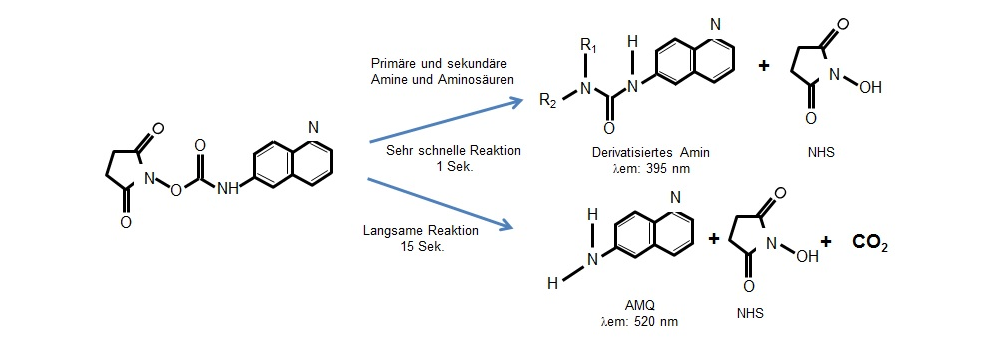
Both primary and secondary amino acids and amines, react spontaneously with AQC to form highly stable, fluorescent derivatives. Excess reagent reacts with water, producing a free amine.
1) Preparation of the Fluorescence Solution
-
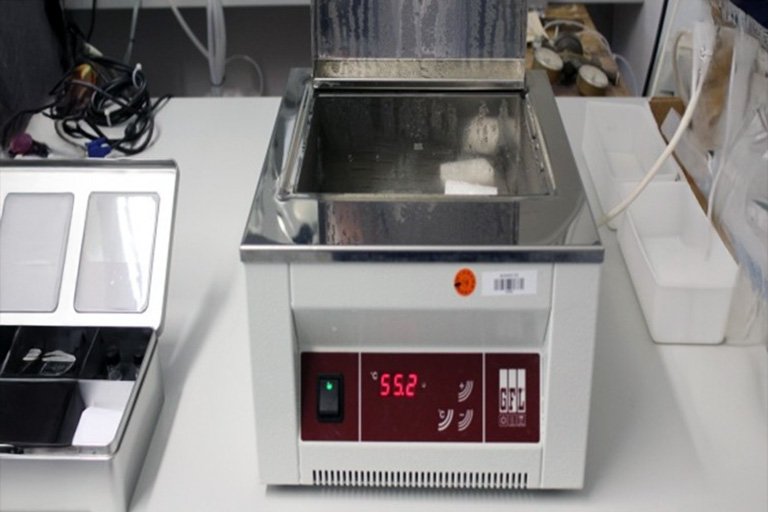
First, a water bath should be heated to 55 °C
-
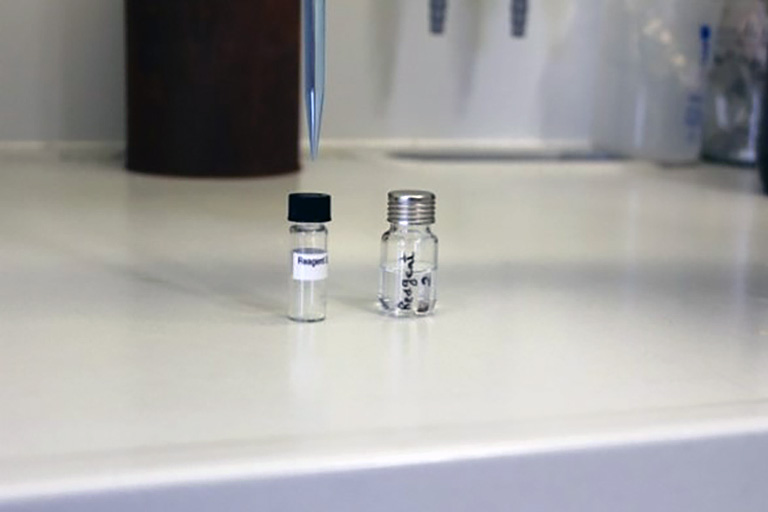
For preparation of the fluorescence reagent, 1 ml of solution RG II is added to the powder RG III
-
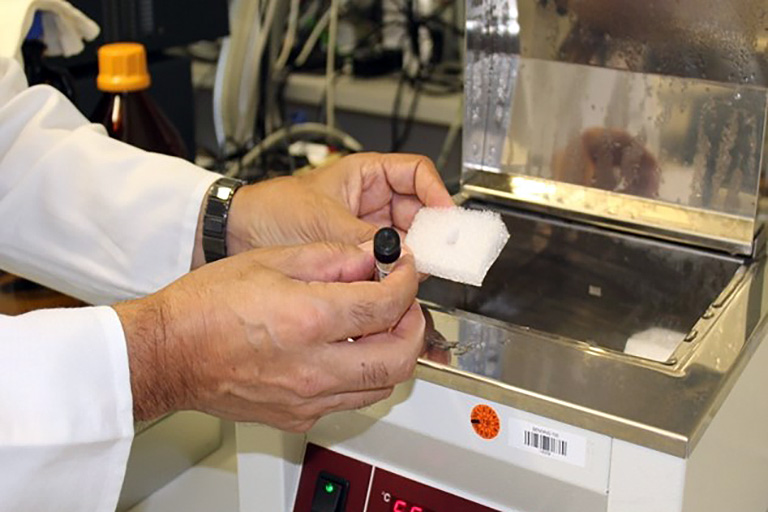
The mixed solution is shaken for 15 seconds …
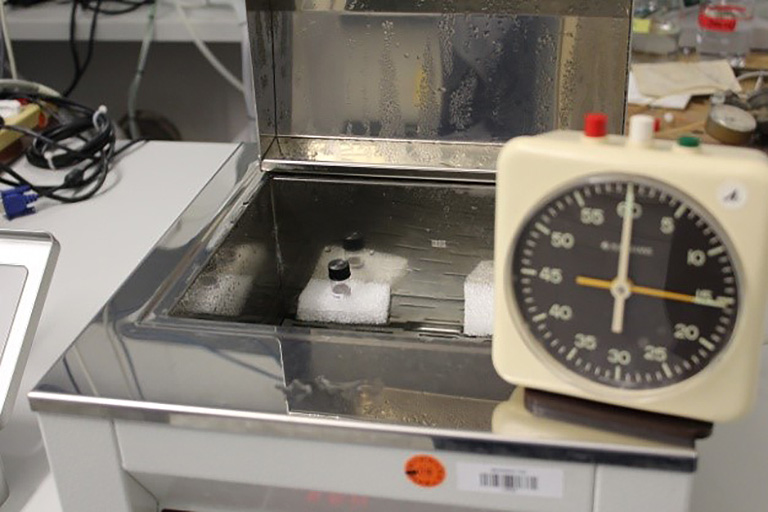
… and then incubated for exactly 10 minutes at 55 °C in the preheated water bath
2) Sample Preparation
-
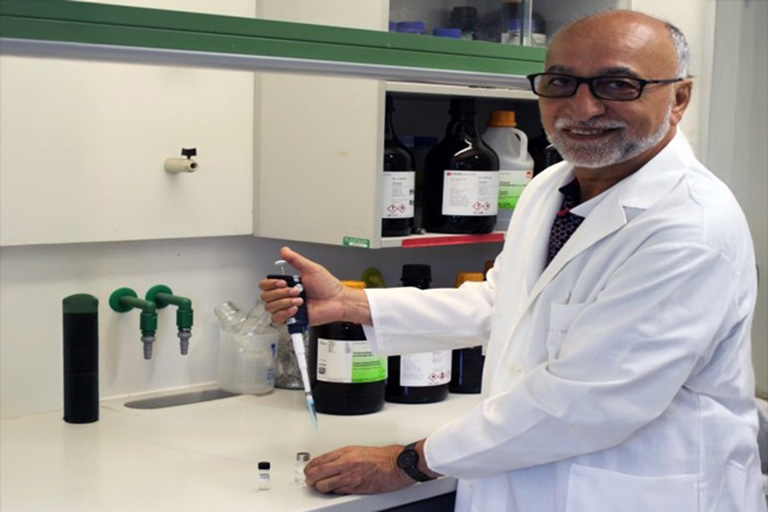
After 10 minutes, the reconstituted AQC reagent is used for derivatization of the samples.
For this, 160 µl of our RG I derivatization buffer is placed into a 1.5 ml Eppendorf tube
-
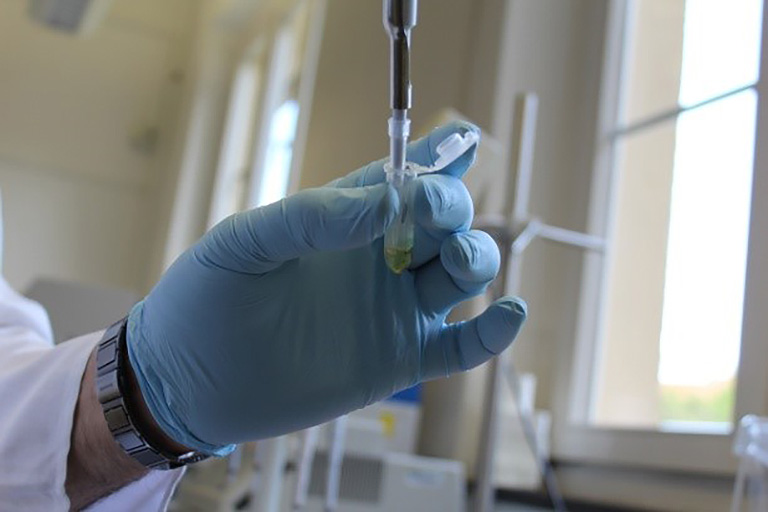
Then, 20 µl of extracted amino acids from the sample material or prepared standard mixtures are added
-
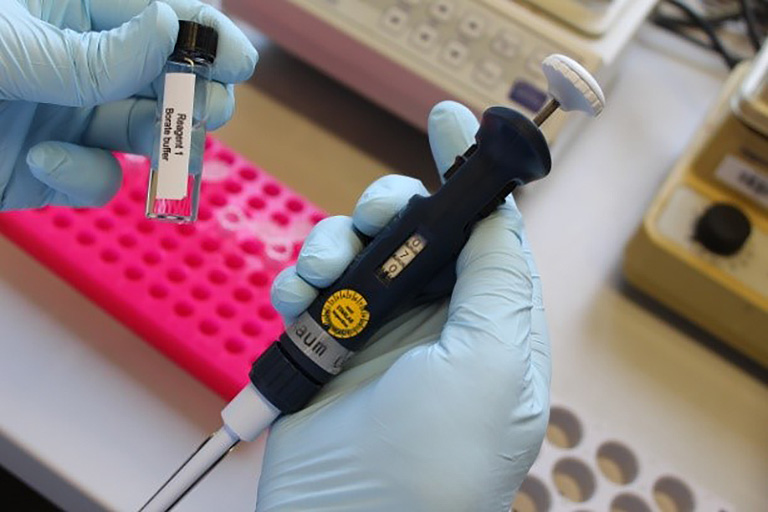
Next, 20 µl of the previously prepared reagent solution RG II are added to reach a total volume of 200 µl
-
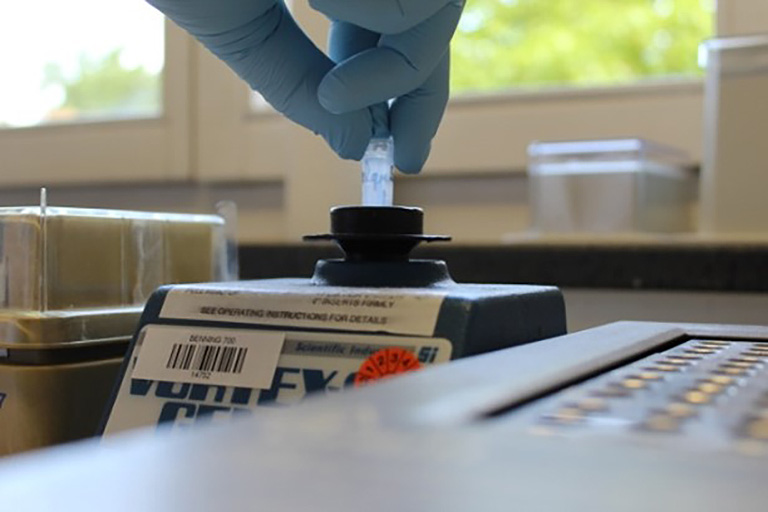
The entire mixture is vortexed for 10 seconds
-
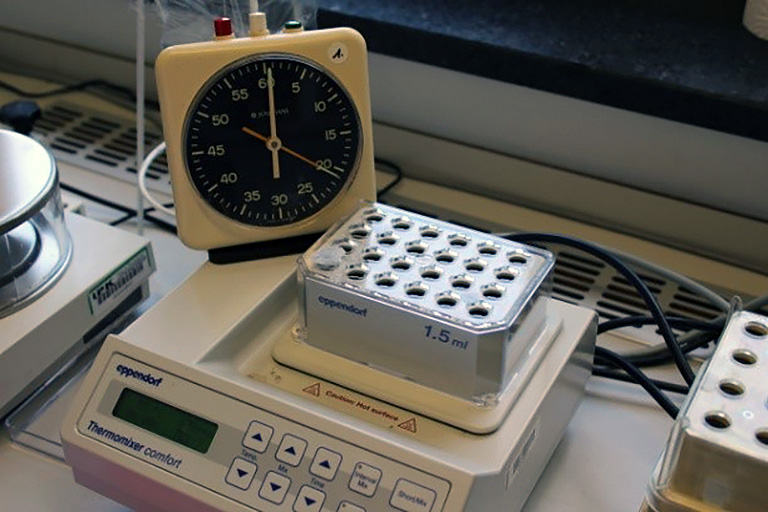
Everything is then incubated for exactly 10 minutes at 55 °C with gentle shaking (300 rpm)
-
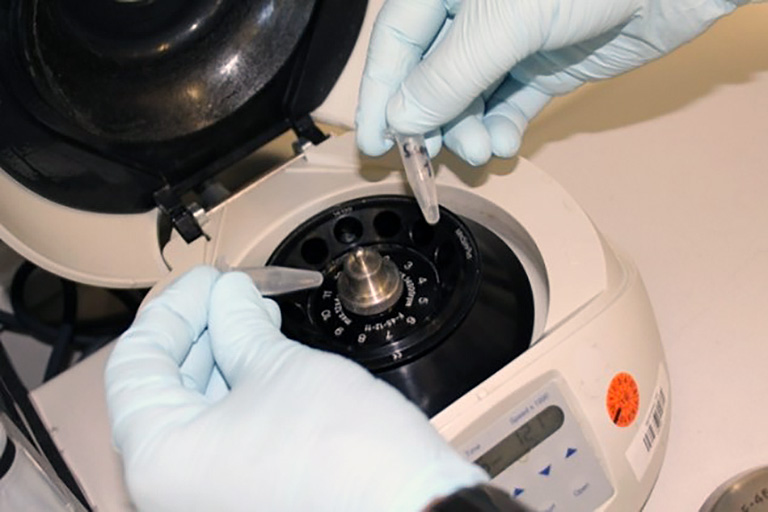
After incubation, the samples are centrifuged for 15 seconds at 13,000 rpm
-
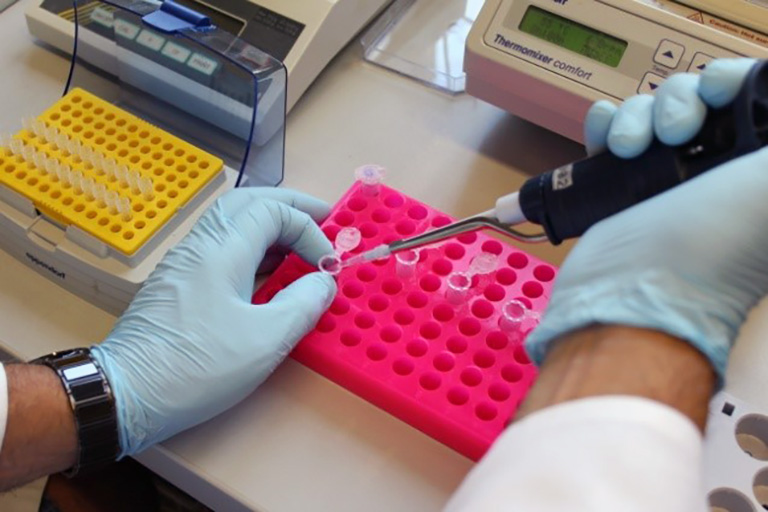
The centrifuged solution is then completely transferred into an appropriate microtiter plate and used for analysis.
Typically, up to 96 samples can be analyzed simultaneously in one microtiter plate.
3) Chromatographic Separation
-
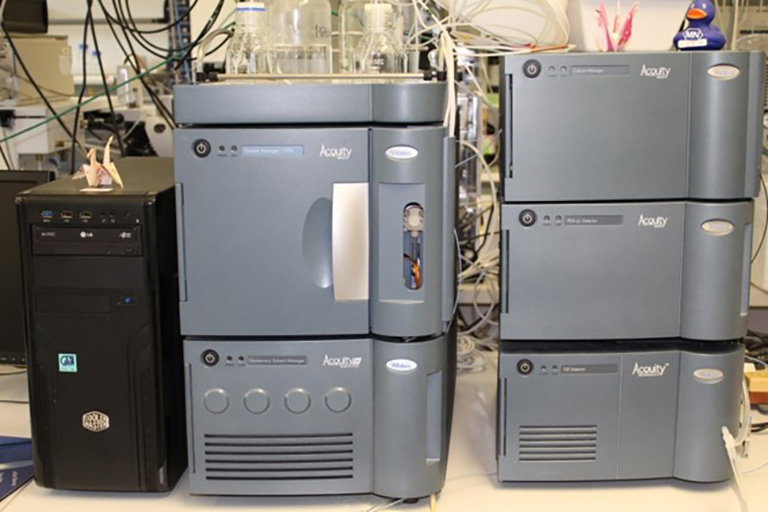
At our facility, the samples are analyzed on a modern UPLC system. We use our own specially developed eluents A and B along with a branded column that ensures long and cost-efficient durability.
-
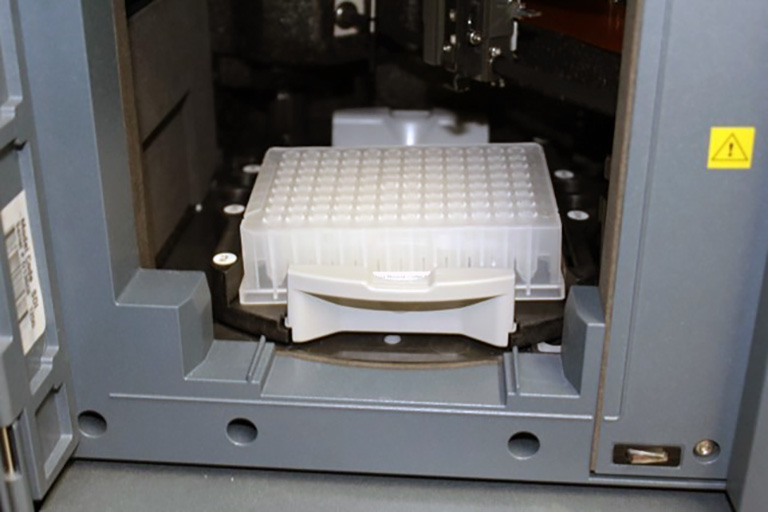
The sample plate is placed in the HPLC/UPLC system pre-cooled to 8 °C.
With our kit on the UPLC system, a complete chromatographic analysis is obtained within 6 minutes.
4) Result
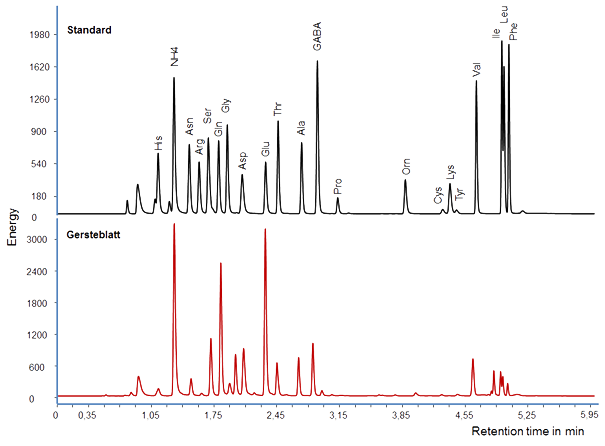
The figure shows the profile of twenty essential and non-essential amino acids, recorded using UPLC in combination with a fluorescence detector. The upper part depicts the separation of the 20 amino acids on a C18 column, while the lower part shows the analysis of the same amino acids in a barley leaf. The corresponding sample concentrations were calculated based on a standard curve. The X-axis represents the time course of the analysis over 6 minutes, while the Y-axis indicates the fluorescence intensity, which corresponds to the measured energy.
This demonstrates that barley leaves exhibit a specific amino acid profile, in which serine (Ser), glutamine (Gln), and glutamate (Glu) are particularly dominant.
Advantages of Analyses by Bioanalytics Gatersleben
- The competitive price includes all necessary equipment and consumables.
- Analysis begins with complimentary test samples to determine the optimal concentration.
- Experienced scientists carry out main analyses, verified with individual standards, and documented in a final report.
- Chromatograms of both standards and samples are provided.
- This ensures rapid and precise insight into the amino acid composition of your samples.
- Concentrations of individual amino acids are quantified using internal standards.
- Compared to conventional methods such as high-performance liquid chromatography (HPLC) – which often fails to achieve clean separation of amino acids and may result in overlaps of key compounds like GABA (gamma-aminobutyric acid) and ACC (1-aminocyclopropane-1-carboxylic acid) – our method delivers more accurate results. Typical HPLC analysis times range from 30 to 60 minutes.
- With UHPLC methods from other providers, results are obtained in about 11 minutes. Our total analysis time is just six minutes.
- The specific combination of eluents and columns used by Bioanalytics Gatersleben contributes to lower costs and reduced analysis times.
Disadvantages of Conventional In-House Analyses
- Personnel costs: Significant expenses arise for trained staff required to perform and evaluate the analyses.
- Procurement of derivatization kits from third-party providers: High costs, additional ordering procedures, and delivery times slow down workflows and processes.
- Expensive columns and pre-columns: The costs of high-quality separation columns and pre-columns are considerable and represent a financial burden.